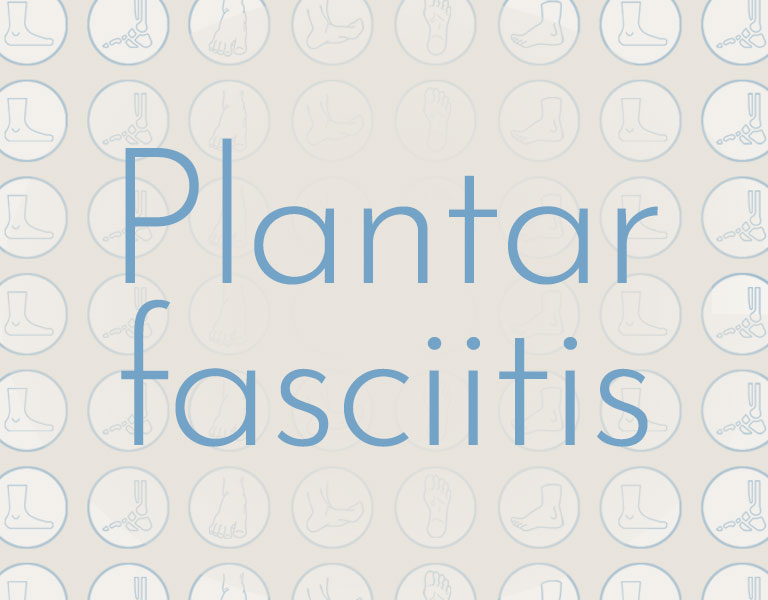Plantar fasciitis
Plantar fasciitis
Plantar fasciitis is a condition that is sometimes called a “heel spur.” There are probably many underlying causes of heel pain and some physicians feel that it is probably more accurate to simply make a diagnosis of “heel pain” rather than try and define an absolute cause in every instance.
Anatomy
The plantar fascia is a structure that runs from the front of the heel bone (calcaneus) to the ball of the foot. This dense strip of tissue helps to support the longitudinal arch of the foot by acting similar to the string on a bow. When the foot is on the ground a tremendous amount of force is concentrated on the plantar fascia, leading to stress where it attaches to the calcaneus. Small tears of the tendon can result, and although the body often heals itself, repeated injury and repair causes a bone spur to form in the hopes of firmly attaching the fascia to the bone.
Symptoms
This condition causes pain on the bottom or center of the heel when putting weight on the foot. This is usually most pronounced in the morning when the foot is first placed on the floor. Other patients will complain of pain when standing after a brief rest of sitting.
Diagnosis
The diagnosis of plantar fasciitis is generally made after the history and physical examination. There are several conditions that can cause heel pain and plantar fasciitis must be distinguished from these conditions. An x-ray can rule out a stress fracture of the calcaneus and show whether a bone spur is present that is large enough to actually cause problems. Laboratory investigation may be necessary in some cases to rule out a systemic illness causing the heel pain, such as rheumatoid arthritis, Reiter’s syndrome, or ankylosing spondylitis.
Medical Treatment
Supporting the area with orthotics such as a well-fitted arch support or inserting a heel cup can reduce the pressure on the sore area and add padding to a heel that has lost some of the fat pad through degeneration. Anti-inflammatory medications are sometimes used to reduce pain. An injection of cortisone onto the area of the fascia is effective but should be used sparingly because this medication may contribute to the process of degeneration of the fat pad or rupture of the plantar fascia, actually making the problem worse.
A gentle stretch held for at least one minute several times per day is extremely helpful. Deep planter specific massage, stretching the tendon by pulling the toes up and rubbing the sore spot as hard as you can tolerate, three times a day for weeks. As a last resort, surgical procedures can be used to remove the bone spur, release the plantar fascia, or release pressure on the small nerves in the area.



